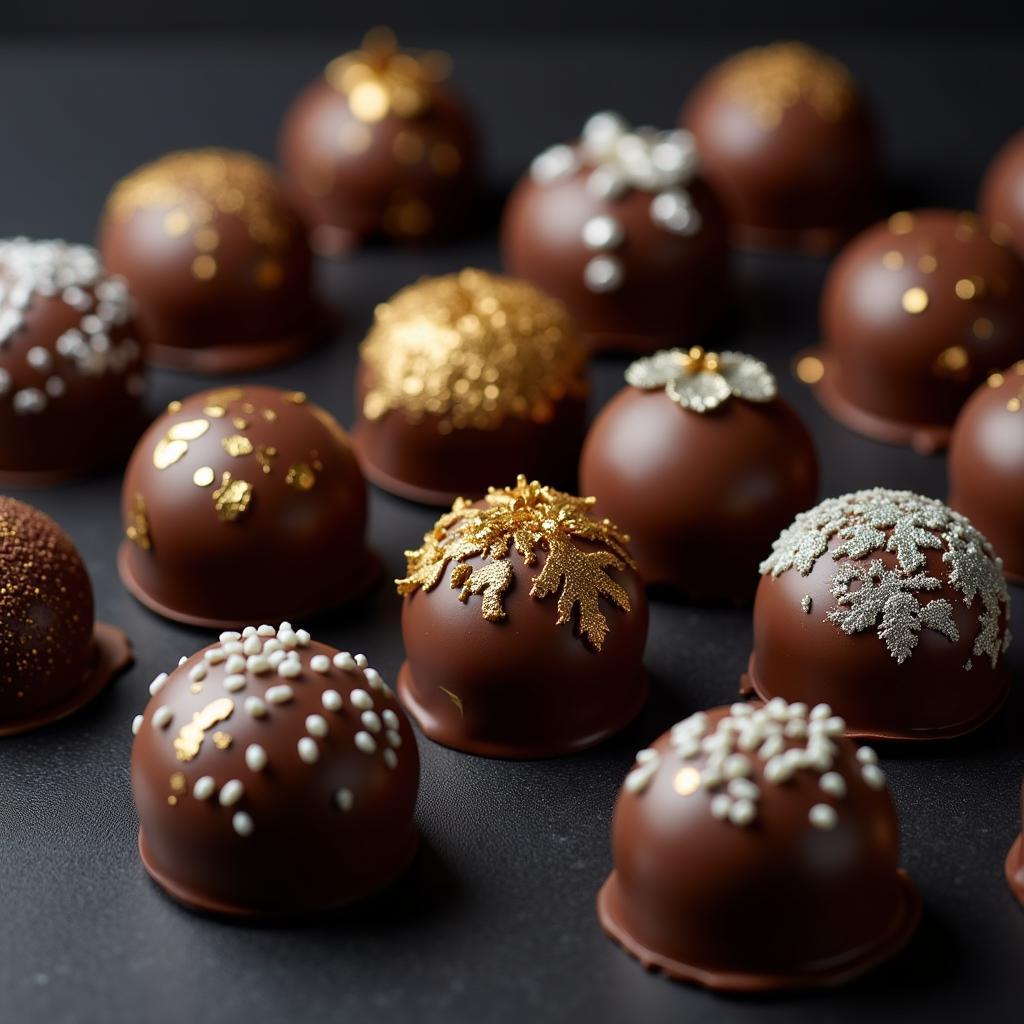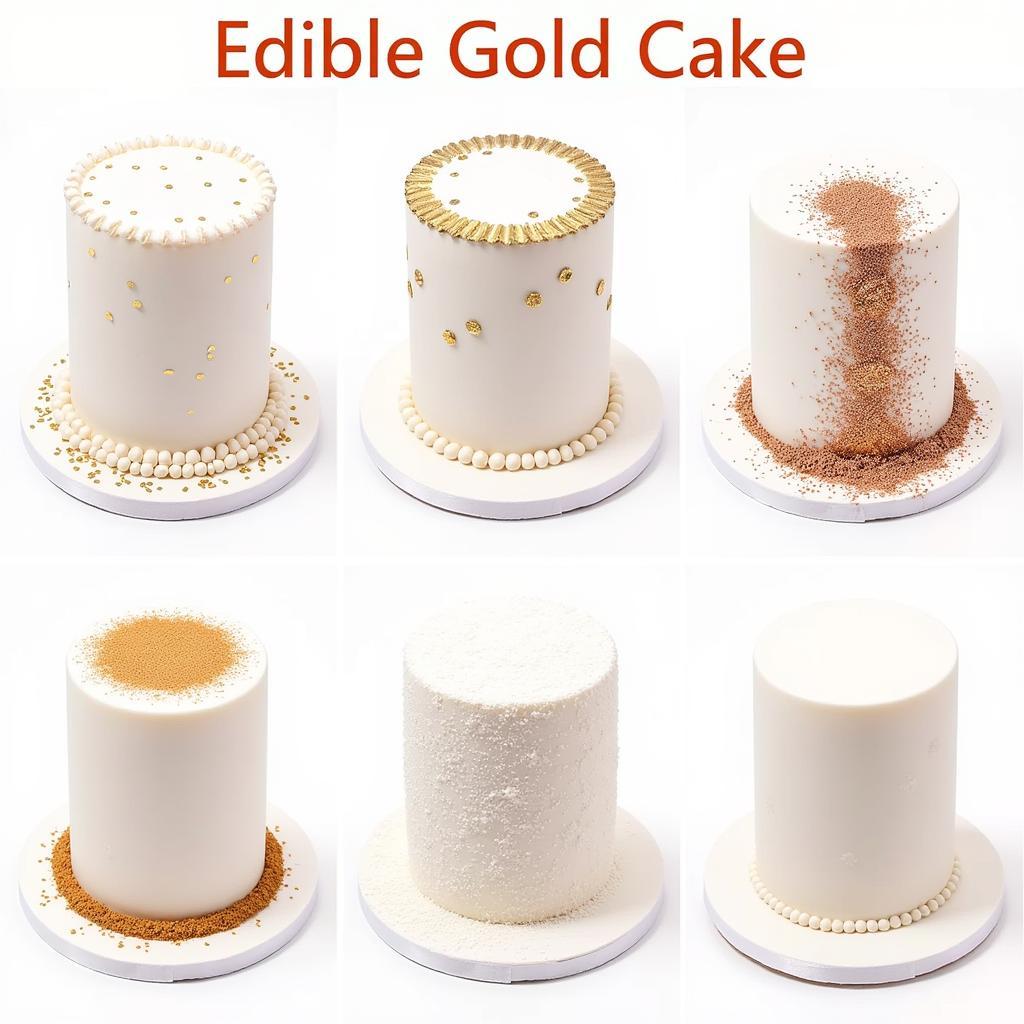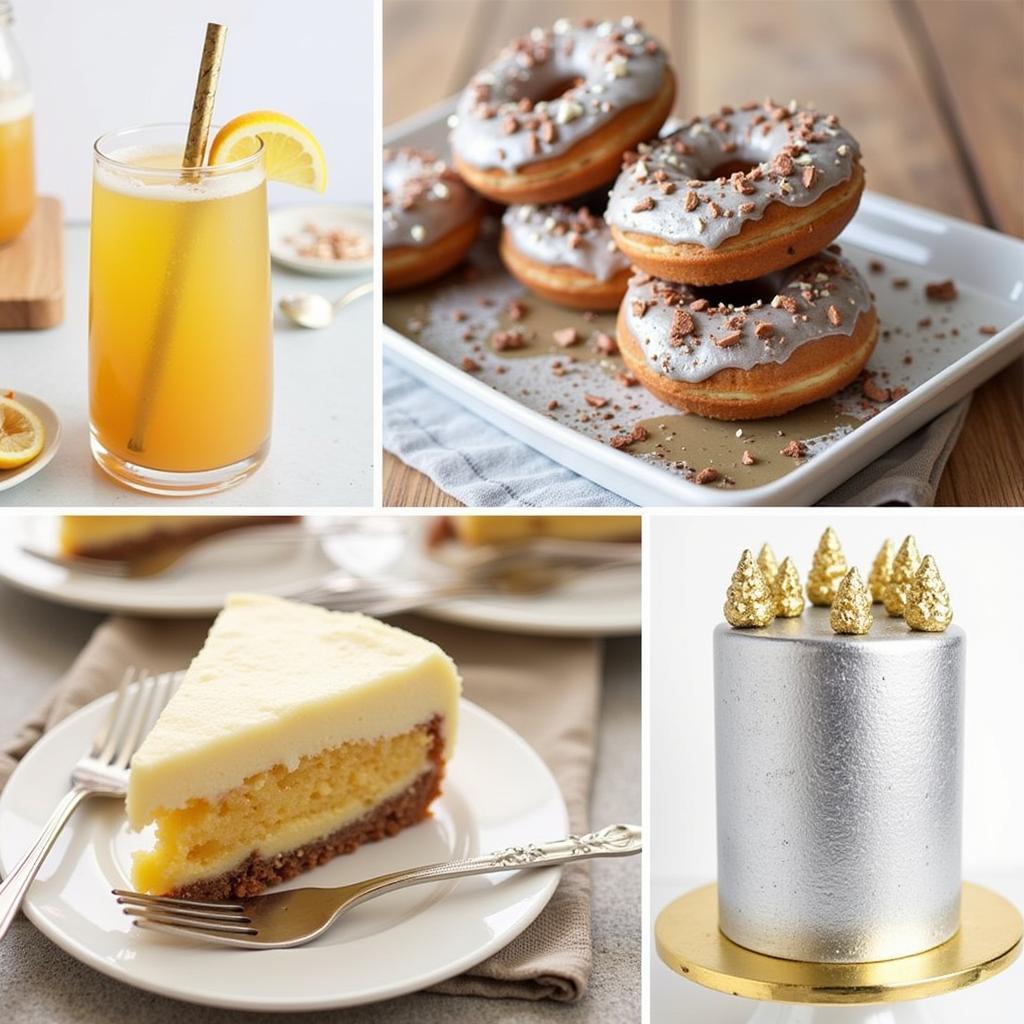Metallic Food has captured the imagination of chefs and food enthusiasts alike, adding a touch of shimmer and glamour to culinary creations. But what exactly is metallic food, and how is this dazzling effect achieved? This article delves into the fascinating world of edible metallics, exploring its various forms, applications, and the science behind its captivating shine. metallic food dye is one of the most popular ways to achieve this effect.
The Allure of Edible Metals
From shimmering cakes and glistening chocolates to vibrant cocktails and dazzling desserts, metallic food elevates the dining experience to a new level of visual appeal. The reflective nature of metallic finishes adds depth and dimension, transforming ordinary treats into extraordinary works of art. But the use of metallics in food goes beyond mere aesthetics. It can also enhance the perceived texture and flavor, creating a multi-sensory experience that tantalizes the taste buds and delights the eye.
 Shimmering Metallic Chocolate Confections
Shimmering Metallic Chocolate Confections
Creating the Metallic Magic: Techniques and Ingredients
The mesmerizing metallic effect in food can be achieved through a variety of methods and ingredients. One popular technique involves using edible metallic leaf, which is incredibly thin sheets of real gold or silver. These delicate sheets are carefully applied to the surface of food, creating a luxurious and opulent finish. Another commonly used method is incorporating metallic food coloring gel or powders. These specially formulated food colorings contain tiny particles that reflect light, giving food a shimmering metallic appearance. Furthermore, food-safe metallic paints allow for intricate designs and detailed decorations, adding an artistic touch to culinary creations.
Is Metallic Food Safe?
The question of safety naturally arises when discussing metallic food. While the thought of consuming metals might seem alarming, edible metallics are specifically designed for consumption and are subject to strict regulations. Edible gold and silver leaf, for instance, are considered biologically inert, meaning they pass through the digestive system without being absorbed. Similarly, food safe metallic paint is formulated with non-toxic ingredients that are safe for consumption. However, it’s crucial to ensure that any metallic product used in food is explicitly labeled as “edible” or “food-grade.”
Baking with a Metallic Touch: The Chicago Metallic Angel Food Cake Pan
While the term “metallic food” often refers to the appearance of the food itself, it can also relate to the tools used in its preparation. The chicago metallic angel food cake pan is a prime example. Its unique design, often featuring a removable base and tall, straight sides, is specifically crafted to allow angel food cake, a notoriously delicate dessert, to rise to its full potential. While the pan itself isn’t consumed, its metallic construction plays a crucial role in creating the light and airy texture that defines this classic dessert.
 Intricate Metallic Cake Decorations
Intricate Metallic Cake Decorations
“Metallic finishes add a touch of magic to any culinary creation,” says renowned pastry chef, Amelia Dubois. “They transform ordinary desserts into captivating centerpieces, elevating the entire dining experience.”
Beyond the Glitter: Exploring the Versatility of Metallic Food
Metallic food is incredibly versatile and can be incorporated into a wide range of culinary applications. From shimmering wedding cakes and glamorous cupcakes to eye-catching cocktails and dazzling desserts, the possibilities are endless. Metallic accents can also be used to create stunning plated desserts, adding a touch of elegance and sophistication to any meal.
What are the different types of metallic food coloring?
Metallic food coloring comes in various forms, including powders, gels, and sprays. Each type offers unique advantages in terms of application and effect. Powders are ideal for dusting and creating subtle shimmer, while gels offer intense color and are perfect for mixing into icing or batter. Sprays provide a quick and easy way to achieve an all-over metallic finish.
 Dazzling Metallic Desserts and Drinks
Dazzling Metallic Desserts and Drinks
Metallic Food: A Feast for the Senses
In conclusion, metallic food is more than just a visual trend. It’s a celebration of creativity and innovation in the culinary world. From the delicate shimmer of edible gold leaf to the vibrant hues of metallic food coloring, metallics offer a unique way to enhance the sensory experience of food. By understanding the different techniques and ingredients involved, you can unlock the potential of metallic food and create culinary masterpieces that are both visually stunning and deliciously satisfying. thors hammer food is an interesting example of themed metallic food. Remember to use only food-safe metallic products to ensure a delightful and safe dining experience.
FAQ
- What is metallic food?
- Is metallic food safe to eat?
- What are the different ways to create metallic food?
- Where can I buy edible metallic products?
- Can I use regular metallic paint on food?
- How do I apply edible metallic leaf?
- What are some popular applications of metallic food?
Scenarios
- Birthday Cake: Imagine a stunning birthday cake adorned with shimmering gold accents, perfectly complementing the celebratory theme.
- Wedding Desserts: Metallic finishes add an elegant touch to wedding desserts, creating a luxurious and memorable experience.
- Themed Parties: Metallic food can be incorporated into themed parties, adding a touch of magic and whimsy to the occasion.
Further Exploration
Explore other articles on our website related to food coloring and cake decorating techniques. Check out our guide to using metallic food dye.
For assistance, contact us at Phone: 02437655121, Email: minacones@gmail.com or visit us at 3PGH+8R9, ĐT70A, thôn Trung, Bắc Từ Liêm, Hà Nội, Việt Nam. We have a 24/7 customer service team.